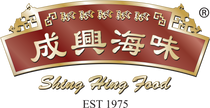Benefits
• Sweet in nature
• Antioxidant
• Soothing effect on pimples
Chrysanthemum contains volatile oil, chrysanthemum glycosides, adenine, amino acids, choline, stachydrin, berberine, flavonoids, chrysanthemum pigments, vitamins, trace elements and other substances, which can resist pathogens and enhance capillary resistance; among them Flavonoids have been proven to have a strong scavenging effect on free radicals, and are effective in anti-oxidation and anti-aging. From the perspective of nutrition, the essence of plants lies in flowers and fruits. Chrysanthemum petals contain 17 kinds of amino acids, of which glutamic acid, aspartic acid, and proline are relatively high in content. In addition, it is also rich in vitamins and trace elements such as iron, zinc, copper, selenium, etc., so it has an incomparable effect on ordinary fruits and vegetables.
Hangbai chrysanthemum, also known as camomile, is a traditional Chinese cultivated medicinal plant. It is one of the eight famous medicinal materials in Zhejiang Province, "Eight tastes of Zhejiang", and it is also the best variety in chrysanthemum tea. Proved by modern medicine: it has the effects of stopping diarrhea, anti-inflammatory, improving eyesight, lowering blood pressure, lowering fat, and strengthening the body. It can be used to treat damp-heat jaundice, stomach pain, lack of food, edema and oliguria. Taking a bath with chrysanthemum soup has the functions of itch-removing, swelling, skin care and beauty.




